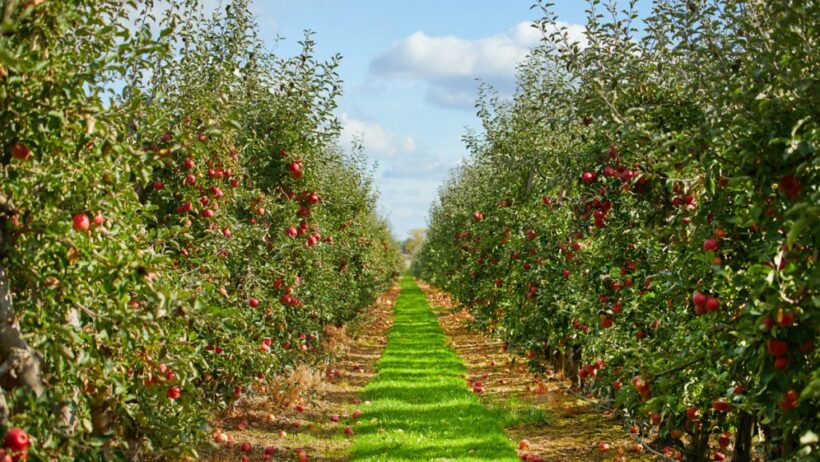The cultivation of apple orchards is not merely a pursuit; it is an intricate dance with nature, wherein the grower must not only understand the preferences of the apple tree but also the broader environmental nuances that influence its growth. One might ponder, what truly is the ideal climate for nurturing apple trees? The answer is as complex as the systems that govern our weather, and with global climate change posing unprecedented challenges, aspiring growers must arm themselves with knowledge to achieve fruitful harvests.
Understanding the Basics: Climate Zones
To embark on the journey of apple cultivation, it is imperative to grasp the fundamentals of climate zones. Apples thrive in temperate climates, with distinct seasons that provide the necessary chill hours during winter to ensure optimal flowering in spring. USDA Plant Hardiness Zones 3 through 7 are generally ideal for most apple varieties, with specific preferences varying significantly.
What characterizes a temperate climate? These regions often experience warm summers, cold winters, and a moderate precipitation pattern throughout the year. In the summer, apple trees bask in temperatures between 75°F to 85°F (24°C to 29°C), fostering robust growth and fruit development. Conversely, winter temperatures should dip sufficiently to fulfill the chilling requirements, typically between 32°F to 45°F (0°C to 7°C).
Precipitation Patterns: Balancing Act
Water is the lifeblood of any orchard. Apple trees require consistent moisture, particularly during the critical growth phases. A convoluted scenario arises when one considers the balance needed between rainfall and irrigation. Ideally, an apple orchard should receive about 30 to 40 inches (76 to 102 cm) of rainfall annually. However, excessive rainfall can lead to root rot, while insufficient rainfall can stress the trees and reduce fruit quality.
Growers often utilize drip irrigation systems to maintain soil moisture without compromising the delicate balance. This method minimizes water wastage and ensures that each tree receives the precise amount of water necessary for thriving. This management strategy is increasingly pivotal as erratic weather patterns driven by climate change threaten classic precipitation models.
Soil Composition: The Foundation of Success
The soil in which the apple trees take root significantly impacts their health and productivity. An ideal soil composition would be loamy, rich in organic matter, and well-drained. This type of soil allows for the ideal moisture retention while preventing the roots from sitting in waterlogged conditions. Soil pH is another critical factor, with apple trees preferring a slightly acidic to neutral range, typically between 6.0 to 7.0. Regular soil testing can help growers tailor their fertilization and amendment strategies accordingly. A plot of land with nutrient deficiencies can spell disaster, thwarting the ambitions of even the most diligent growers.
Sunlight: The Energy Source
Sunlight plays an indispensable role in the growth of apple trees. A minimum of six to eight hours of direct sunlight each day is necessary to facilitate photosynthesis and maximize fruit yield. Areas with too much shade or excessive tree density may struggle with fruit production. Thus, proper spacing and strategic planting become essential, with considerations made for both current growth and future canopy expansion.
As environmental shifts threaten sunlight patterns, growers must adapt by monitoring tree placement and potentially employing pruning techniques to minimize shade interference, ensuring each tree can bask in long, sun-drenched hours.
Frost: The Frigid Foe
What could be more devastating than waking up to a late spring frost after weeks of warm weather? Late frosts can decimate crops at the flowering stage, rendering a season’s hopes null and void. The ideal temperature for apple bloom lies between 60°F to 75°F (16°C to 24°C). Late frosts often occur when warm stretches mislead trees into flowering prematurely, only to be thwarted by an unseasonably frigid air mass. To mitigate frost damage, growers may deploy protective measures such as wind machines or frost cloths that help moderate ground temperatures and shield delicate blossoms.
Pest and Disease Management: The Ongoing Vigil
No discussion about the ideal climate for apple orchards would be complete without addressing the potential threats posed by pests and diseases. Warmer temperatures can exacerbate pest proliferation, with insects such as aphids and codling moths thriving in warmer climates. Regular monitoring and integrated pest management techniques become essential for growers in understanding the delicate balance of their ecosystem.
Furthermore, diseases such as apple scab and powdery mildew flourish in damp conditions, making it crucial for growers to implement good orchard hygiene and choose disease-resistant varieties. The rise of climate variations necessitates a dynamic approach, requiring a keen awareness of how climate-induced changes affect pest and disease cycles.
Conclusion: Navigating an Uncertain Future
As climate change continues to manifest in unpredictable weather patterns and increasing temperature fluxes, the ideal climate for apple orchards may become a moving target. Growers must adopt adaptable strategies, embracing innovative techniques in horticulture alongside traditional practices. Community knowledge-sharing, research advancements, and proactive measures can customize responses to the climate’s vicissitudes. Ultimately, with deliberate effort and a deep understanding of the apple trees’ needs, successful orcharding can endure the challenges posed by a changing climate. Will you be among the hopeful few dedicated to this vital endeavor? The future of apple orchards—and perhaps the planet—could hinge on your answer.








